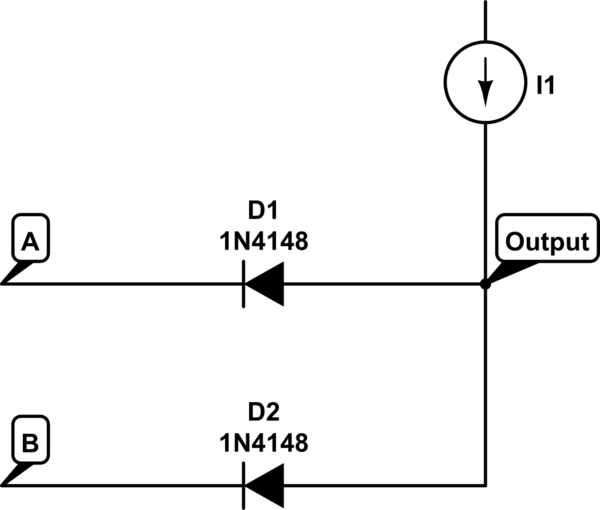This circuit is supposed to work as a logic gate. I need to find out the logic operation it performs. Suppose the diodes are ideal.
https://www.circuitlab.com/circuit/egg3wh/logicgate/

simulate this circuit – Schematic created using CircuitLab
Now when the circuit is implemented with voltage sources, I know the general approach to solve this. You check the voltage at the anode and cathode of the diodes and determine whether or not it is conducting....
With a current source I am kind of confused on what to do. I can't determine the state of the diodes for a given input combination (00, 01, 10, 11) because I don't know the voltage at the anode of the diodes.
I think the problem is that I am not used to current source driven diodes.
Can anyone provide some guidance?
Thank you.
